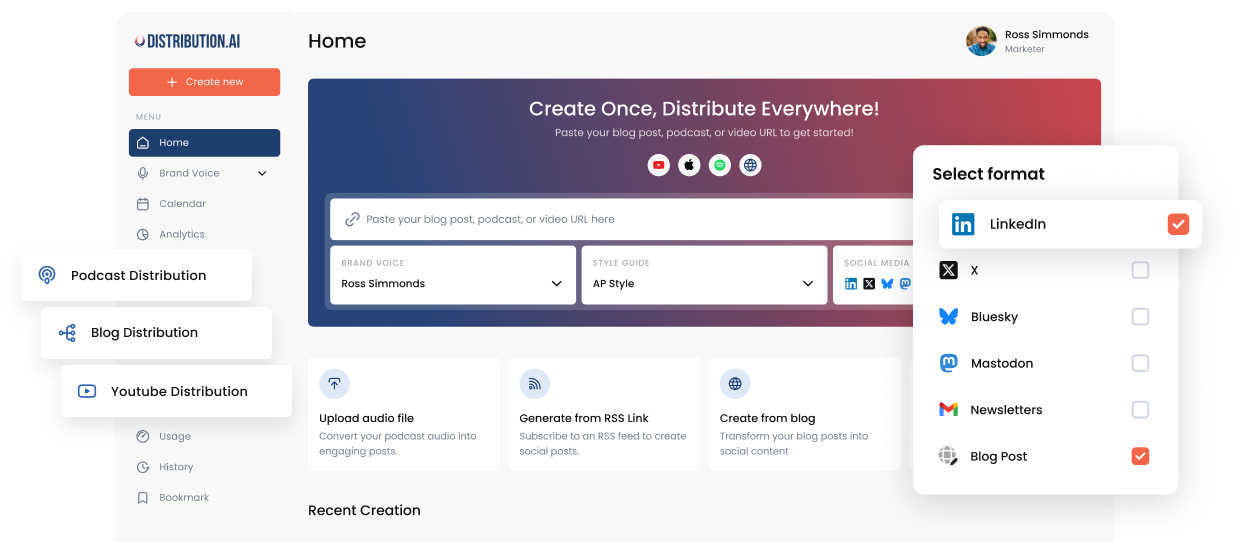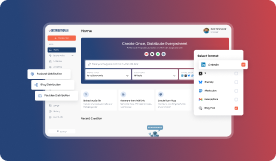Mastering Social Media Personas: Expert Strategies for Engaging Your Audience
Master social media personas to boost engagement and conversions with data-driven audience insights and expert strategies.

Your social media strategy lives or dies based on how well you know the people you’re trying to reach.
Social media personas give you that knowledge.
They turn vague audience ideas into concrete profiles that guide every post, campaign, and interaction.
This guide walks you through building social media personas that actually work.
You’ll learn how to gather insights, create detailed profiles, and use them to create content that resonates with your target audience.
What Are Social Media Personas?
A social media persona represents your ideal customer on social platforms.
Think of it as a detailed character sketch based on real data about your social media audience.
These profiles go beyond basic demographics. They capture personality traits, content preferences, pain points, and behavioral patterns specific to how people act on social media platforms.
Unlike traditional buyer personas, social media personas focus specifically on digital behavior.
They reveal what content formats your audience prefers, which platforms they use most, and when they’re most active online.
The difference matters because people behave differently on social media than in other contexts.
Someone might be professional on LinkedIn but casual on Instagram. Your social media persona captures these platform-specific behaviors.
Why Social Media Personas Transform Your Marketing Strategy?
Creating buyer personas for social media isn’t busy work.
These profiles directly impact your bottom line by making every marketing decision more strategic.
1. Reach the Right People
Generic content reaches nobody. When you create content based on detailed audience personas, you speak directly to the people most likely to buy from you.
Your marketing messages become sharper.
Instead of trying to appeal to everyone, you craft posts that resonate with your ideal customer.
This focused approach attracts higher-quality leads who actually need what you’re selling.
2. Build Stronger Connections
Understanding your customer persona helps you communicate in ways that feel personal.
You’ll know what challenges keep them up at night, what motivates their purchasing decisions, and what type of content makes them stop scrolling.
This knowledge transforms your social media efforts from broadcasting into conversations. Your audience feels seen and understood, which builds brand loyalty over time.
3. Make Smarter Content Decisions
Should you post videos or infographics? Morning or evening? Professional or casual tone?
Your social media personas answer these questions with data rather than guesswork.
Every piece of content serves a purpose when you have a clear target customer in mind. For this, consider using an Instagram post maker to streamline your content creation process and maintain a consistent visual style.
You’ll waste less time creating posts that miss the mark and invest more energy in content that drives engagement metrics.
4. Optimize Your Marketing Budget
Persona consistent ads perform significantly better than generic campaigns.
When you target specific audience segments with tailored messaging, you get more conversions per dollar spent.
Your social media analytics will show higher engagement rates, better click-through performance, and improved ROI across all your digital marketing initiatives.
Essential Elements of Effective Social Media Personas
A strong social media persona includes specific details that guide your content strategy. Missing any of these elements weakens the entire profile.
1. Demographic Foundation
Start with the basics that shape how someone experiences the world:
– Age range and generation
– Geographic location
– Income level
– Education background
– Job title and industry
– Company size for B2B audiences
These demographic details help you understand the context of your audience’s lives.
A 25-year-old freelancer in Brooklyn faces challenges different from those of a 50-year-old executive in Dallas.
2. Psychographic Depth
Surface-level demographics only tell part of the story.
Dive deeper into what drives your target audience:
– Core values and beliefs
– Personal and professional goals
– Major pain points and frustrations
– Lifestyle preferences
– Decision-making patterns
Understanding these factors helps you connect emotionally with your social media audience.
You’ll know not just who they are, but why they make the choices they do.
3. Social Behavior Patterns
How does your customer persona actually use social media?
These details determine where and how you reach them:
– Preferred social media platforms
– Daily time spent on each network
– Peak activity hours
– Content preferences (video, articles, memes, stories)
– Engagement style (active commenter or passive scroller)
Your existing customers probably show clear patterns in these areas.
Use social media analytics to identify trends across your current audience.
4. Content Consumption Habits
People consume content in different ways.
Your persona should specify:
– Favorite brands they follow
– Influencers they trust
– Types of accounts they engage with most
– Hashtags they use or follow
– Groups and communities they join
These preferences reveal what already captures your audience’s attention.
You can use similar approaches in your own content or partner with the influencers they already trust.
5. Professional Context
For B2B marketing personas, include work-related details:
– Industry and sector
– Role in purchasing decisions
– The team size they manage
– Tools and software they use
– Professional challenges they face
This information helps you create content that addresses real workplace situations your audience encounters daily.
Building Your Social Media Persona
Creating personas for social media requires gathering data from multiple sources.
Each method reveals different aspects of your target market.
1. Mine Your Existing Data
Start with what you already know. Your current followers provide rich insights into who’s attracted to your brand.
Social media platforms offer built-in analytics that reveal follower demographics, engagement patterns, and content performance.
Instagram Insights, LinkedIn Analytics, and Facebook Analytics all provide demographic breakdowns of your audience.
Tools like Distribution.ai can analyze your social media audience across multiple platforms simultaneously.
Instead of switching between different analytics dashboards, you get a unified view of who’s engaging with your content and how they behave.
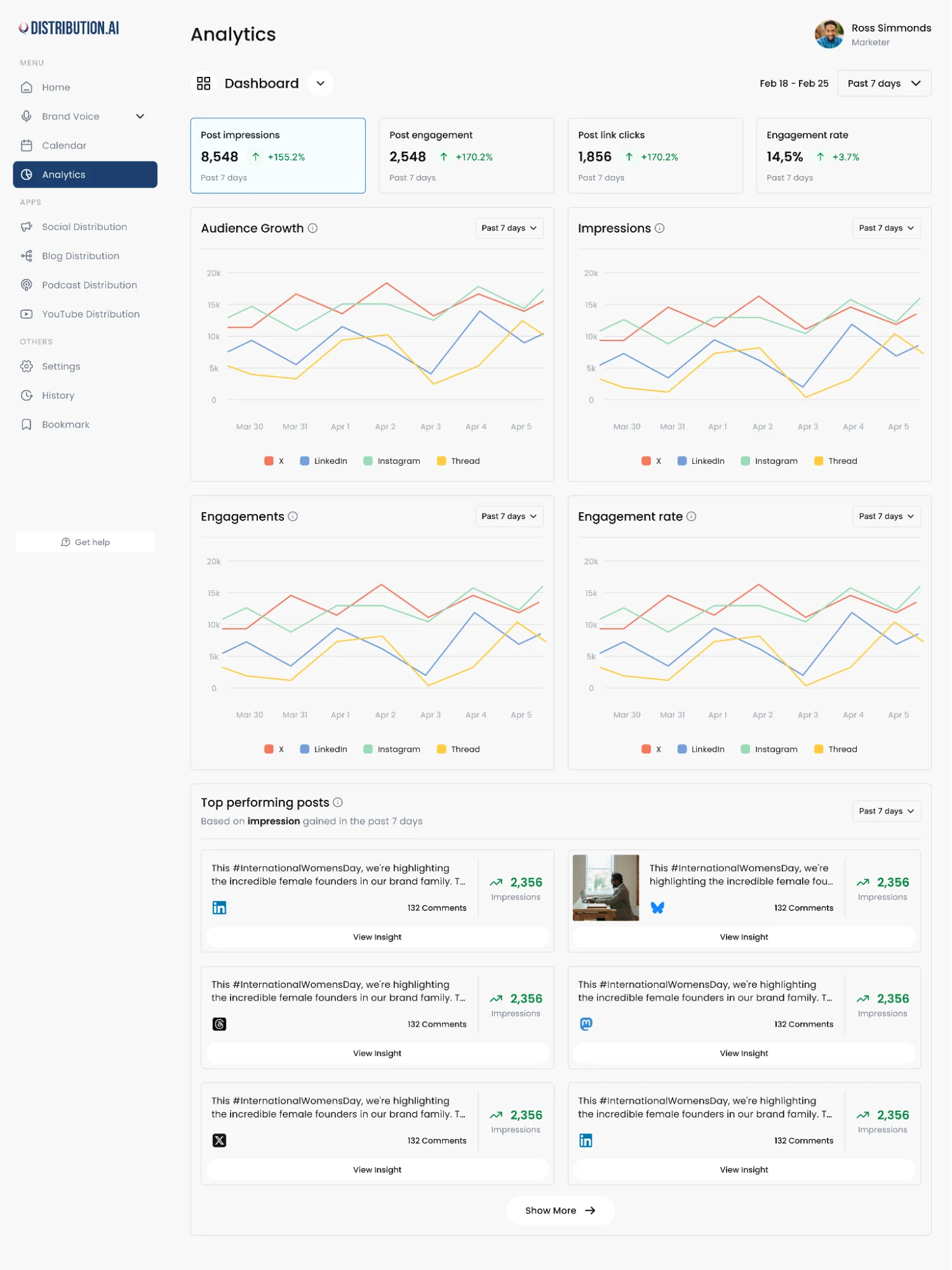
Look for patterns in your data. Which posts get the most engagement? What time of day sees peak activity? Which content formats perform best?
These patterns reveal preferences shared across your audience segments.
3. Conduct Direct Research
Sometimes you need to ask questions directly. Surveys and interviews provide context that raw numbers miss.
Create short surveys asking your followers about their goals, challenges, and content preferences.
Keep them brief—5 to 7 questions max—to encourage completion.
Social media polls offer quick feedback on specific questions. Instagram Stories, Twitter, and LinkedIn polls all make it easy to gather opinions from your audience.
Interview your best customers one-on-one.
These conversations reveal nuances about their journey, decision-making process, and what they value most about your brand.
Monitor customer feedback across all touchpoints. Customer support interactions, product reviews, and social media comments all contain valuable insights into real customers’ experiences.
4. Analyze Website Behavior
Your website traffic reveals how social media audiences interact with your brand beyond the platforms themselves.
Google Analytics shows which social media platforms drive the most traffic to your site.
Use UTM parameters on your social posts to track exactly which campaigns bring visitors who convert.
Review user behavior on your site. Do visitors from Instagram browse differently than those from LinkedIn? This information helps you tailor your approach on each social media platform.
Check your CRM data for patterns among customers who came from social media. How do their purchases compare to those of customers from other channels?
This helps you understand the real-world data behind your social media ROI.
5. Study Your Competition
Your competitors’ audiences likely overlap with yours. Analyzing their social media presence reveals opportunities and gaps.
Look at who engages with their content. What types of posts get the most comments? Which topics generate discussion? Their successes and failures both teach valuable lessons.
Identify what your competitors do well and where they fall short. Maybe they excel at video content, but neglect Instagram Stories. These gaps represent opportunities for you to stand out.
Pay attention to customer complaints on competitors’ social media accounts.
These pain points reveal problems your product or service might solve better.
6. Segment Your Audience
Not everyone who follows you fits the same profile.
Most businesses need three to seven distinct personas to represent different audience segments.
Look for natural divisions in your follower base. You may serve both small business owners and enterprise decision-makers.
Maybe your product appeals to different age groups who use it differently.
Create your primary persona first—the ideal buyer persona who represents your best customers. Then develop secondary personas for other important segments.
Avoid creating too many personas.
More than seven usually means you’re getting too granular or including segments that aren’t significant enough to warrant separate strategies.
Platform-Specific Persona Development
People show up differently on different social media platforms.
Your persona needs to account for these variations.
1. Instagram Personas
Instagram users prioritize visual appeal and authenticity.
Your Instagram persona likely values:
- High-quality images and videos
- Behind-the-scenes content
- Stories and Reels over static posts
- Authentic, unpolished moments
- Strong visual brand identity
Peak activity often occurs during commutes and in the evening. Content needs to grab attention quickly, since users scroll through their feeds quickly.
2. LinkedIn Personas
LinkedIn attracts professionals seeking industry insights and networking opportunities.
Your LinkedIn persona probably wants:
- Thought leadership content
- Industry trends and analysis
- Professional development tips
- Company news and updates
- Long-form articles with substance
Post during business hours for maximum reach.
Content should maintain a more professional tone than on other platforms.
3. TikTok Personas
TikTok users expect entertaining, authentic content that feels native to the platform.
Your TikTok persona appreciates:
- Short-form videos with strong hooks
- Trending audio and effects
- Educational content delivered entertainingly
- Personality-driven content
- Quick tips and hacks
TikTok’s algorithm rewards consistency and engagement.
Users expect multiple posts per week and genuine interaction in comments.
4. Facebook Personas
Facebook’s demographics skew older than those of other platforms. Your Facebook persona might value:
- Community and group discussions
- Longer-form content and articles
- Customer testimonials and reviews
- Events and local business information
- Mix of personal and professional content
Facebook users spend more time reading posts than on faster-paced platforms.
They’re more likely to engage with detailed content.
Bringing Your Persona to Life
Raw data doesn’t inspire creativity. Turn your research into a persona that your marketing teams can actually use.
1. Give Your Persona a Name and Face
“Sarah, the Small Business Owner”, feels more real than “Persona A.” Pick a name that helps your team remember who they’re creating content for.
Find or create an image that represents your persona. This visual reminder helps everyone picture the real person behind the data.
2. Write a Narrative
Tell your persona’s story in 2-3 paragraphs. Describe their typical day, their challenges, and what they hope to achieve. This narrative brings dry statistics to life.
Include specific details that make the persona memorable. Where does Sarah grab her morning coffee?
What podcast does she listen to during her commute? These details help your team visualize her as a real person.
3. Create a Reference Document
Compile everything into a single-page persona profile. Include:
– Photo and name
– Quick demographic snapshot
– Key goals and challenges
– Social media behavior patterns
– Content preferences
– Preferred brands and influencers
– Direct quotes from research
Make this document easily accessible to everyone who creates content.
Pin it in your project management tool or print it for your workspace.
4. Share Across Your Organization
Social media personas shouldn’t live only in the marketing department. Customer support, sales, and product teams all benefit from understanding your target consumers.
Hold a meeting to introduce your personas to the broader team. Explain how you developed them and why each element matters.
Encourage other departments to contribute their own insights. Sales teams interact with customers daily. Their perspective can validate or refine your personas.
Using Personas to Drive Your Content Strategy
A persona sitting in a folder does nothing for your business.
The real value comes from applying these insights to every marketing decision.
1. Plan Your Content Calendar
Each persona needs content that addresses their specific interests and pain points. Map out topics that resonate with each audience segment.
Consider where each persona is in their customer journey. Brand awareness content differs from consideration-stage material. Your content formats should match their current needs.
Use tools like Distribution.ai to scale your content creation based on persona insights.
The platform can help you repurpose a single piece of content into multiple formats optimized for different personas and platforms.
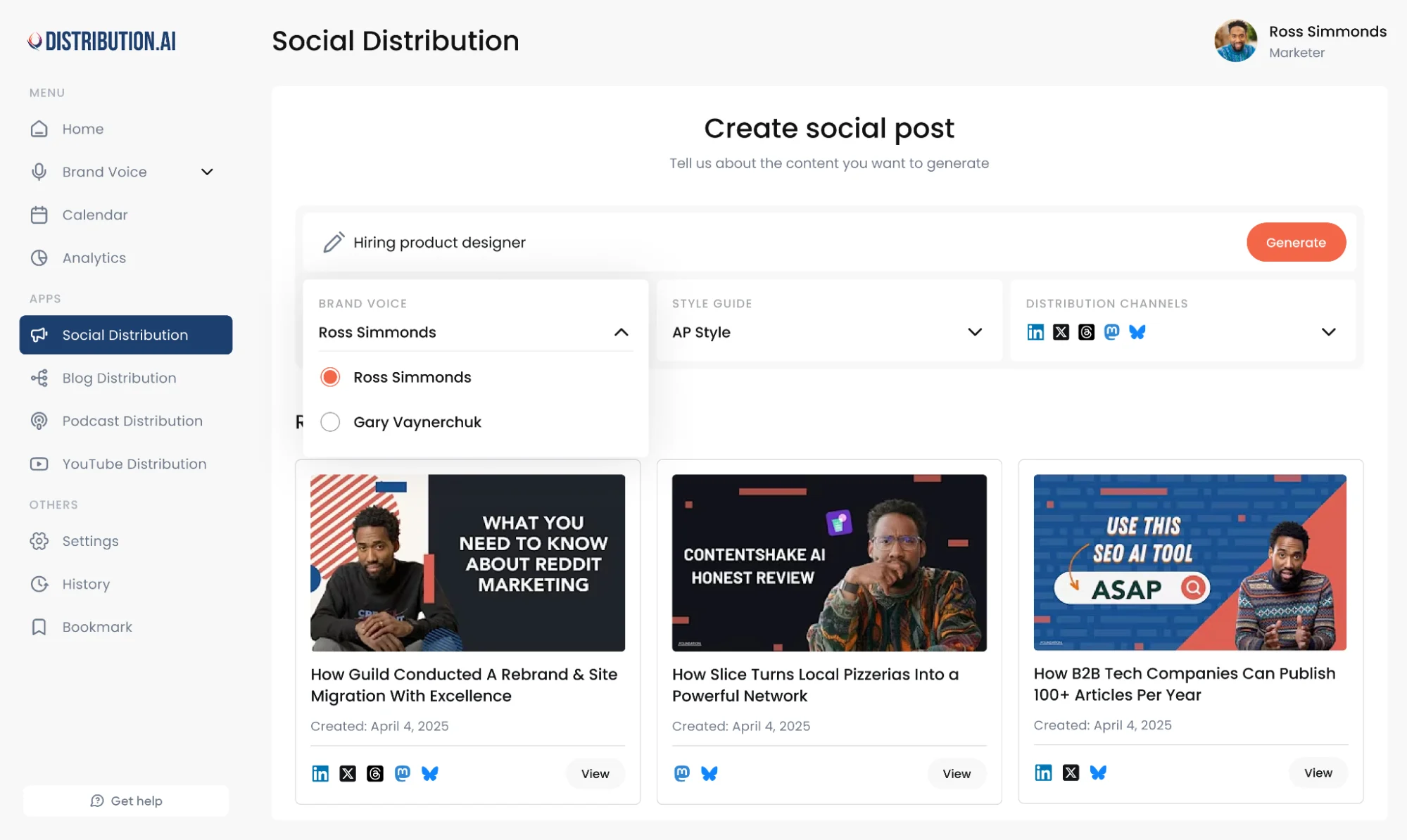
2. Tailor Your Messaging
Generic messages fail to convert. Create specific marketing messages for each persona using language and examples that resonate with them.
Address their unique pain points directly. Show how your solution solves the specific problems they face.
Use examples and case studies featuring people similar to them.
Match your brand voice to their preferences. Some personas respond to casual, conversational tones.
Others expect more formal, authoritative communication.
3. Optimize Your Posting Strategy
Your social media analytics reveal when each persona is most active. Schedule posts to reach them during peak engagement windows.
Different personas prefer different content types. One might love short videos, while another might engage more with carousel posts. Create variety that serves all your key audience segments.
Distribution.ai's scheduling features let you plan persona-specific content across multiple platforms.
You can maintain a consistent presence tailored to each audience without manual posting.
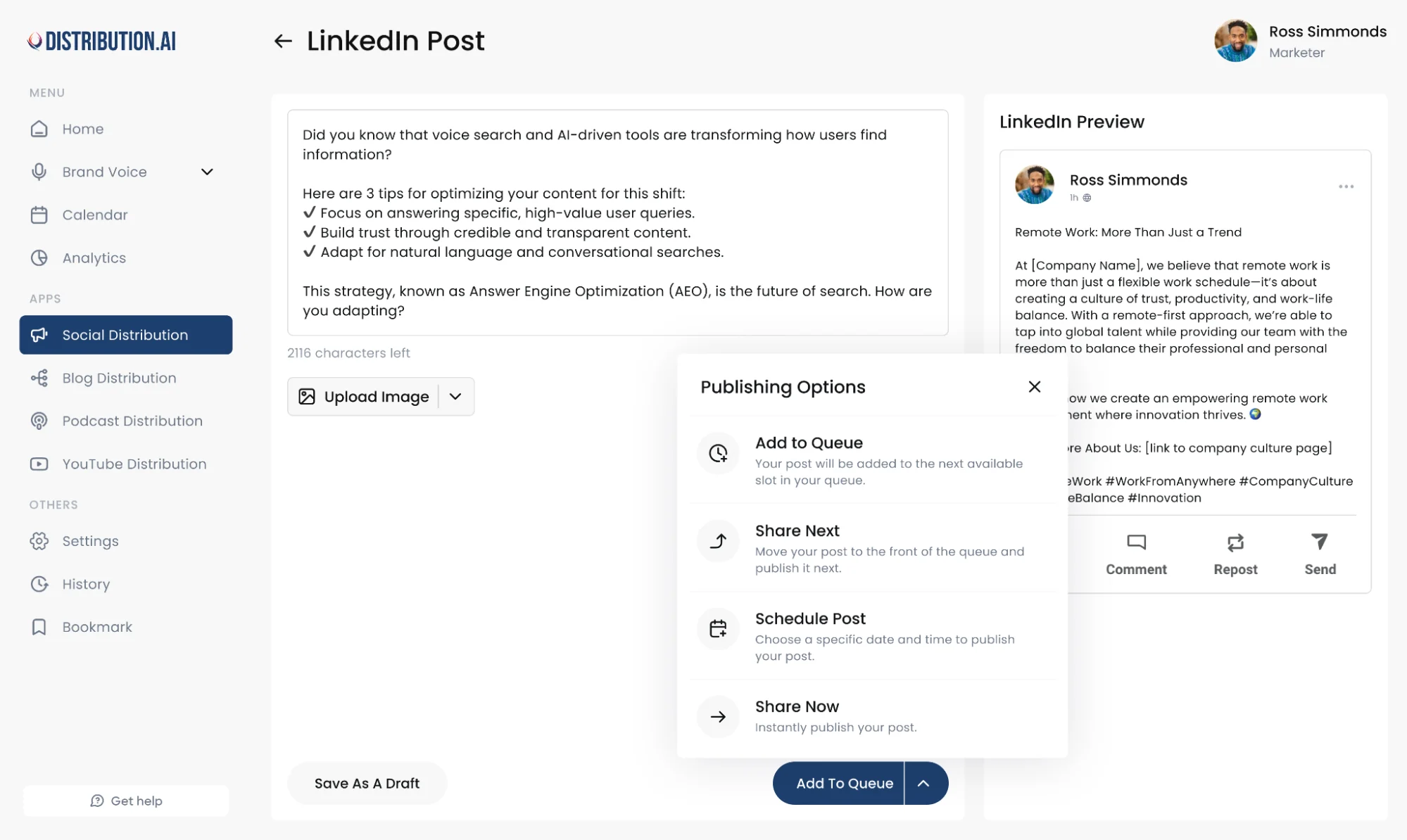
4. Build Targeted Campaigns
Paid social media campaigns perform best when targeted to specific personas. Create audience segments in your ad platforms based on persona characteristics.
Design and create assets that speak directly to each persona’s goals and challenges.
The imagery, copy, and call to action should all align with what motivates that specific segment.
Test different approaches with each persona. One might respond better to testimonial-style ads, while another prefers product demonstrations.
5. Measure and Refine
Track engagement metrics for content aimed at different personas. Which types of posts drive the most meaningful interactions? What content falls flat?
Use these insights to refine both your content and your personas themselves.
Real-world performance data helps you understand what actually resonates versus what you assumed would work.
Social media trends change constantly.
Review your personas quarterly to ensure they still reflect current audience behavior and preferences.
Advanced Strategies for Persona-Based Marketing
Once you’ve mastered basic persona creation, these advanced techniques take your marketing strategy to the next level.
1. Create Platform-Specific Variations
Your customer might act like one persona on LinkedIn and another on Instagram.
Develop variations of your core personas that account for platform-specific behaviors.
Sarah might share professional insights on LinkedIn, but post personal hobby content on Instagram.
Your approach to reaching her needs to shift accordingly.
2. Map Content to the Customer Journey
Different personas need different content at each stage of their purchasing journey.
Map out what questions each persona asks during the awareness, consideration, and decision phases.
Create a content library organized by persona and journey stage.
This ensures you always have appropriate content ready to move people toward conversion.
3. Develop Persona-Specific Metrics
Standard engagement metrics don’t tell the whole story.
Define success differently for different personas based on their value to your business.
Your high-value enterprise persona might convert slowly but generate significant revenue. Measure their engagement over longer timeframes.
A smaller business persona might convert quickly but needs different support resources.
4. Use Personas for Crisis Management
When issues arise on social media, your personas guide appropriate responses.
Different audience segments need other types of reassurance and information.
Prepare response templates for common scenarios tailored to each persona’s concerns. This helps your team respond quickly and appropriately when problems occur.
5. Enable AI-Powered Personalization
Modern tools can deliver persona-specific content at scale.
Distribution.ai uses your persona insights to automatically adapt content for different audience segments.
Instead of manually creating variations for each persona, let AI handle the customization while you focus on strategy.
This approach maintains personalization without the manual workload.
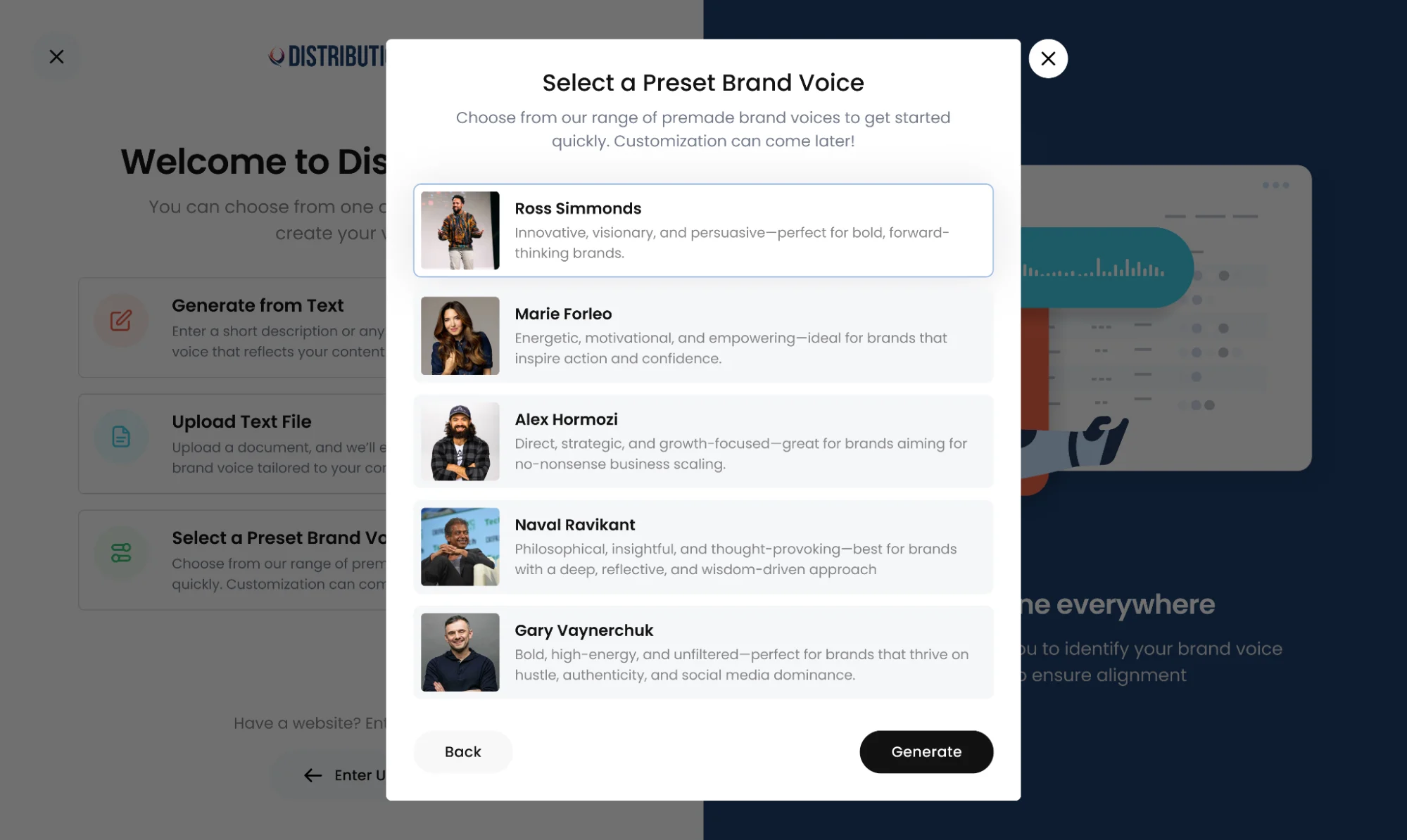
Creating great content for multiple personas across various platforms gets overwhelming fast.
Distribution.ai solves this scalability challenge.
The platform automatically adapts your core content for different personas and social media platforms.
Feed it a blog post, and it generates persona-specific social posts, video scripts, and campaign ideas.
You maintain control over your brand voice while reaching each audience segment with appropriately tailored content.
The AI understands your persona characteristics and creates variations that resonate with each group.
Final Thoughts
The brands winning on social media today aren’t the ones spending the most. They’re the ones who know their audience best.
Start small. Build one detailed persona and test content created just for that profile. Measure how it performs against your usual posts.
You’ll see the difference in engagement and conversion almost immediately.
Then keep going. Each new persona helps you connect more authentically with another part of your audience.
Your audience is already out there, waiting for content that speaks to them. Personas help you create it.
Frequently Asked Questions
Promote, repurpose & distribute your content with AI
Start 15-Day Free Trial